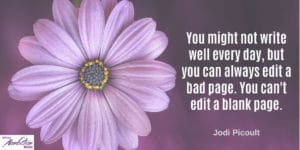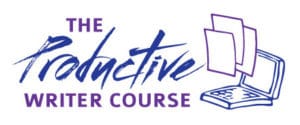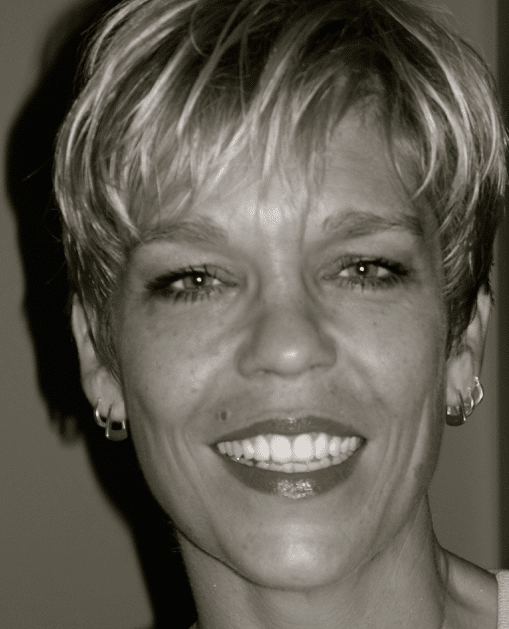The critical voices in your head get in the way of your productivity. These voices create barriers that stop you from achieving your writing goals, like a daily word count. However, if you start a daily practice of breathing and meditation, you can turn these barriers into hurdles to sprint over. Before you know it, you’ll find yourself more creative and productive.
I used to be a slow and methodical writer, agonizing over every word choice and sentence structure. I second-guessed what people would think about my writing. Would they judge me? Would they disagree with me? Would I offend them with my ideas or suggestions?
My daily writing output was low, and I jumped around from project to project for fear of failure. This writing approach changed when I encountered a quote by fiction author Jodi Picoult.

That quote provided me with an ah-ha moment. I realized that to be a prolific writer, I had to change the way I wrote. At that moment, I received the inspiration I needed to experiment with a new way of writing.
Rather than critiquing and editing my writing as I wrote, I switched to freewriting. That alone helped my daily word count go up.
The goal of this writing technique is to silence your inner critic and focus on getting words onto the page. The words may not all be publishable, but as Jodi said, you can’t edit a blank page.
You can try to freewrite without a breathing and meditation practice to accompany it, but, in my experience, developing an effective technique will remain challenging. Those barriers I mentioned will continue to limit your ability to increase your word count until you incorporate breathing and meditation as a precursor to each freewriting session.
The Art of Breathing
If you’ve never used the breath as a meditation technique, let me explain how to do so.
Start off by concentrating on your breath. We tend to take this automatic process for granted, and most of us take shallow breaths that only use a small percentage of our lung capacity. If you’ve attended a yoga class before, you’ll know that each session begins with a focus on your breath. (If you haven’t participated in a yoga session, I’d recommend attending a Hatha Yoga session, as this style of yoga focuses on your breath as well as your body movements.) But you don’t need a yoga session to master breathing.
Close your eyes and focus on your breath.
- Take three really deep breaths through your nose.
- Inhale until your lungs fill up and your belly expands.
- Pause for a fraction of a second and gradually release the air through your nose as you contract your belly.
What just happened is you stopped focusing on the thoughts swirling around your head while you concentrated on your breath. You can’t do both at the same time. Therefore, when you focus on breathing, your mind gets quiet. You only focus on taking a breath.
This art of focusing on your breath is an amazingly simple process that any writer can master, and best of all, it’s free. From here, it’s only a short step to master the art of meditation.
The Art of Meditation
Meditation also can be referred to as mindfulness, and it’s an ability to be present and in-the-moment. It’s about letting go of the past and the future and focusing on the now.
We all have distracting ideas, thoughts, and voices that swirl around our heads, and when that happens, it’s difficult to tap into your creativity and write. Meditation doesn’t help you get rid of these thoughts, but it trains you to observe them without judgment, so you let go instead of clinging on to them.
If you’re feeling self-doubt about your writing, worried about a huge to-do list, upset over an argument you had last week, or stressed about a meeting you’re attending next week, there’s no room left for creative thoughts to orbit your conscious mind. To write productively, you need to reduce the noise in your head.
 Meditation is all about bringing your attention to your breath. When you first begin the practice, your mind will start to wander and those little voices will creep into your headspace. With practice, though, you’ll be able to be-in-the-moment for more extended periods. And that’s when you will find it easier to write.
Meditation is all about bringing your attention to your breath. When you first begin the practice, your mind will start to wander and those little voices will creep into your headspace. With practice, though, you’ll be able to be-in-the-moment for more extended periods. And that’s when you will find it easier to write.
There are hundreds of books, websites, videos, and podcasts about mastering the art of meditation, but here’s a quick summary of the process:
- Sit comfortably. You don’t have to be cross-legged on the floor. Sitting in a comfy armchair or at your writing desk works just as well.
- Focus on your breath. Slowly inhale and exhale as describe in the breathing section above. If you breathe quickly and shallowly, you can do it without thinking. That’s why you need to focus on breathing slowly and deeply.
- Follow your breath. In and out. If your mind wanders, let go of those thoughts and shift your focus back to your breath.
The critical thing to remember is that meditation takes practice, and at first, you will feel like you’re constantly battling to bring the focus back to your breath. But with daily practice, you can master the art of mindfulness and clearing your mind of distracting thoughts.
Start off by aiming for a two-minute meditation session and extend it from there.
Freewriting for Productivity
Meditating before you start a period of freewriting will get you into the writing-zone. Your conscious mind can only juggle a few bits of information at a time, so when you focus on your breath, you help quiet your conscious mind and tap into your subconscious. The creative faucet will open, and your words will flow quicker than your conscious mind can analyze or criticize them.
This results in a stream of content that goes from your head to your hand without going through your critical filter. If you can turn this critical filter off, you don’t worry about what you’re writing. Instead, you focus on the creative process and spewing words onto your page.
How many times have you sat down to write, and your inner critic immediately tells you you’re not good enough? It’s time to silence your inner critic. Give mindful breathing and meditation a chance to help you tap into your creativity and become a more productive and prolific writer.
Have you used breathing and meditation to increase your creativity and daily word count? Tell me about your experience—and share your suggestions—in a comment below. And if you found this article inspiring, please share it with your social network to inspire your fellow writers.
About the Author
Jay Art ale abandoned her corporate career to become a digital nomad and full-time writer. She’s an avid blogger and a nonfiction author helping travel writers and travel bloggers achieve their self-publishing goals. Join her at Birds of a Feather Press where she shares tips, advice, and inspiration to writers with an independent spirit.
ale abandoned her corporate career to become a digital nomad and full-time writer. She’s an avid blogger and a nonfiction author helping travel writers and travel bloggers achieve their self-publishing goals. Join her at Birds of a Feather Press where she shares tips, advice, and inspiration to writers with an independent spirit.
 Would you like to write and publish nonfiction work, like articles, blog posts, books, or reports? Check out the Nonfiction Writers’ University. Get the basic education you need and the coaching to help you succeed as a nonfiction writer. Take advantage of monthly live educational and group coaching events. Enjoy a 30-day trial membership for only $1.
Would you like to write and publish nonfiction work, like articles, blog posts, books, or reports? Check out the Nonfiction Writers’ University. Get the basic education you need and the coaching to help you succeed as a nonfiction writer. Take advantage of monthly live educational and group coaching events. Enjoy a 30-day trial membership for only $1.
Do you want a more advanced approach to your nonfiction writing education? Join the Nonfiction Writers’ University MASTERS program. Receive ongoing live Certified High Performance Coaching, Author Training, and Authorprenuership Training as well as monthly educational and group coaching events. Learn all the steps to becoming a successful—and profitable—author. Discover how (finally) to write consistently, boldly, enthusiastically, and productively. Develop the mindsets, strategies, habits of the world’s most successful writers. Click here to learn more.
